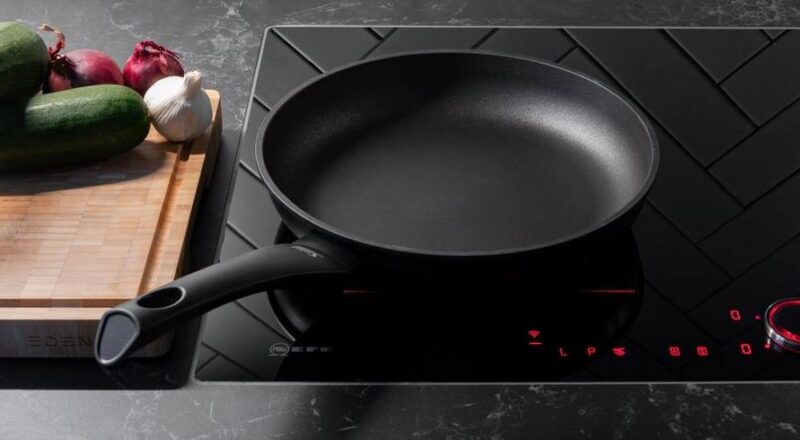Cooking with cast iron on induction stoves is gaining popularity due to its unique benefits. However, mastering the art of using cast iron cookware on these modern cooktops requires understanding the learning curve involved. This guide aims to equip you with the knowledge to navigate this journey effectively.
The primary keyword, cast iron learning curve on induction, highlights the challenges and tips associated with using this traditional cookware on advanced cooking surfaces. It’s essential to grasp these nuances to make the most of your culinary experiences.

What is Induction Cooking?
Induction cooking uses electromagnetic fields to heat cookware directly. Unlike traditional cooking methods, it doesn’t rely on a flame or electric element to transfer heat. This makes it efficient and fast, but it also means that not all cookware is suitable for use on induction stoves.
Why Use Cast Iron on Induction?
Many kitchen professionals and home cooks prefer cast iron for its heat retention and durability. When combined with induction cooking’s efficiency, you get a powerful combination that can elevate your cooking experience. However, understanding the learning curve is crucial to avoid common pitfalls.
Benefits of Cast Iron on Induction
- Heat Retention: Cast iron holds heat longer, making it ideal for slow cooking and maintaining a steady temperature.
- Durability: It can last a lifetime with proper care, even on induction cooktops.
- Versatility: Suitable for various cooking techniques, from frying to baking.
The Learning Curve Explained
The cast iron learning curve on induction involves understanding how to adjust your cooking techniques and care routines. Here’s what you need to know:
Initial Adjustments
When first using cast iron on induction, you might notice differences in heat distribution. Induction cooktops heat the pan directly, resulting in quicker temperature changes. It’s important to start with lower heat settings and gradually increase them.
Seasoning Your Cast Iron
Seasoning is a crucial step in maintaining your cast iron cookware. On induction, seasoning helps prevent sticking and enhances the cookware’s non-stick properties. Learn more about how to properly season your cast iron (dofollow).
Heat Management
Managing heat is a vital part of using cast iron on induction. Due to the rapid heating capabilities of induction, it’s essential to monitor your cooking closely to prevent overheating.
Common Challenges and Solutions
Uneven Browning
Uneven browning can occur if heat distribution isn’t managed properly. Adjust your cooking technique by moving the pan slightly during cooking. For more tips, visit our guide on uneven browning solutions (dofollow).
Cold Spots
Induction cooktops can sometimes cause cold spots in cast iron pans. To avoid this, ensure your pan is properly centered on the cooktop. Learn more about managing cold spots (dofollow).
Expert Tips for Success
Choose the Right Cast Iron
Ensure your cast iron cookware is compatible with induction. Look for pans with a flat base that can make full contact with the cooktop.
Preheat Gradually
Start with low heat and gradually increase it. This helps prevent thermal shock and extends the life of your cast iron cookware.
Regular Maintenance
Clean your cast iron properly after each use. Avoid harsh detergents and always dry it thoroughly to prevent rust.
FAQs
Can I use any cast iron on induction?
Not all cast iron cookware is suitable for induction. Ensure your pan has a flat bottom and is labeled as induction-compatible. For more details, visit Lodge’s guide.
How do I know if my cast iron works on induction?
You can check if a magnet sticks to the base of your cast iron cookware. If it does, it should work on induction. Here’s a helpful guide to testing compatibility (dofollow).
Is cast iron outdated for induction?
Despite the advancements in cookware technology, cast iron remains a popular choice for induction cooking due to its durability and heat retention. Explore more about its relevance here (dofollow).

Conclusion
The cast iron learning curve on induction may seem challenging at first, but with the right knowledge and techniques, you can harness the full potential of your cookware. By understanding the unique properties of cast iron and how it interacts with induction technology, you can enjoy the benefits of efficient and versatile cooking.
This article contains affiliate links. We may earn a commission at no extra cost to you.

